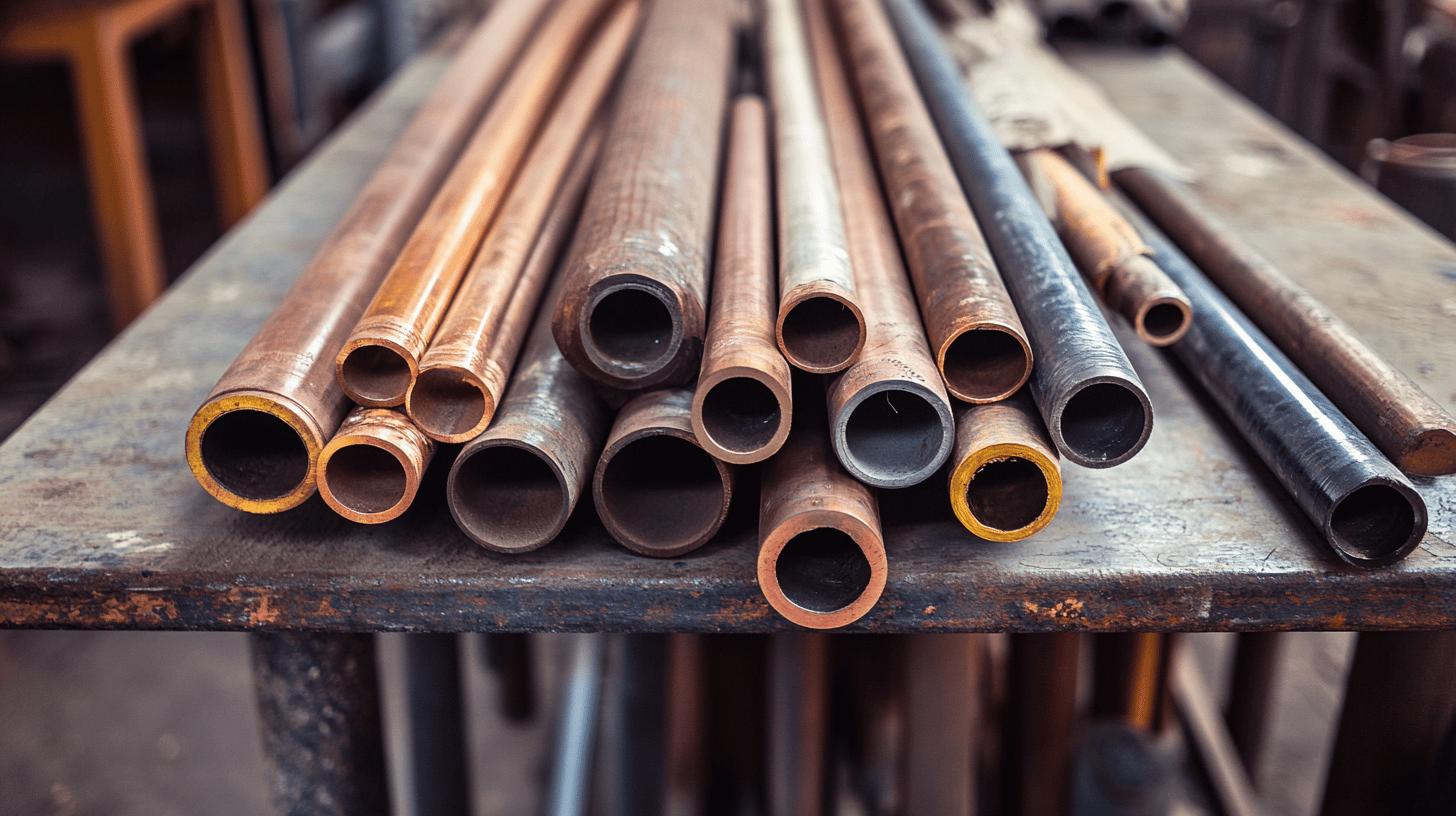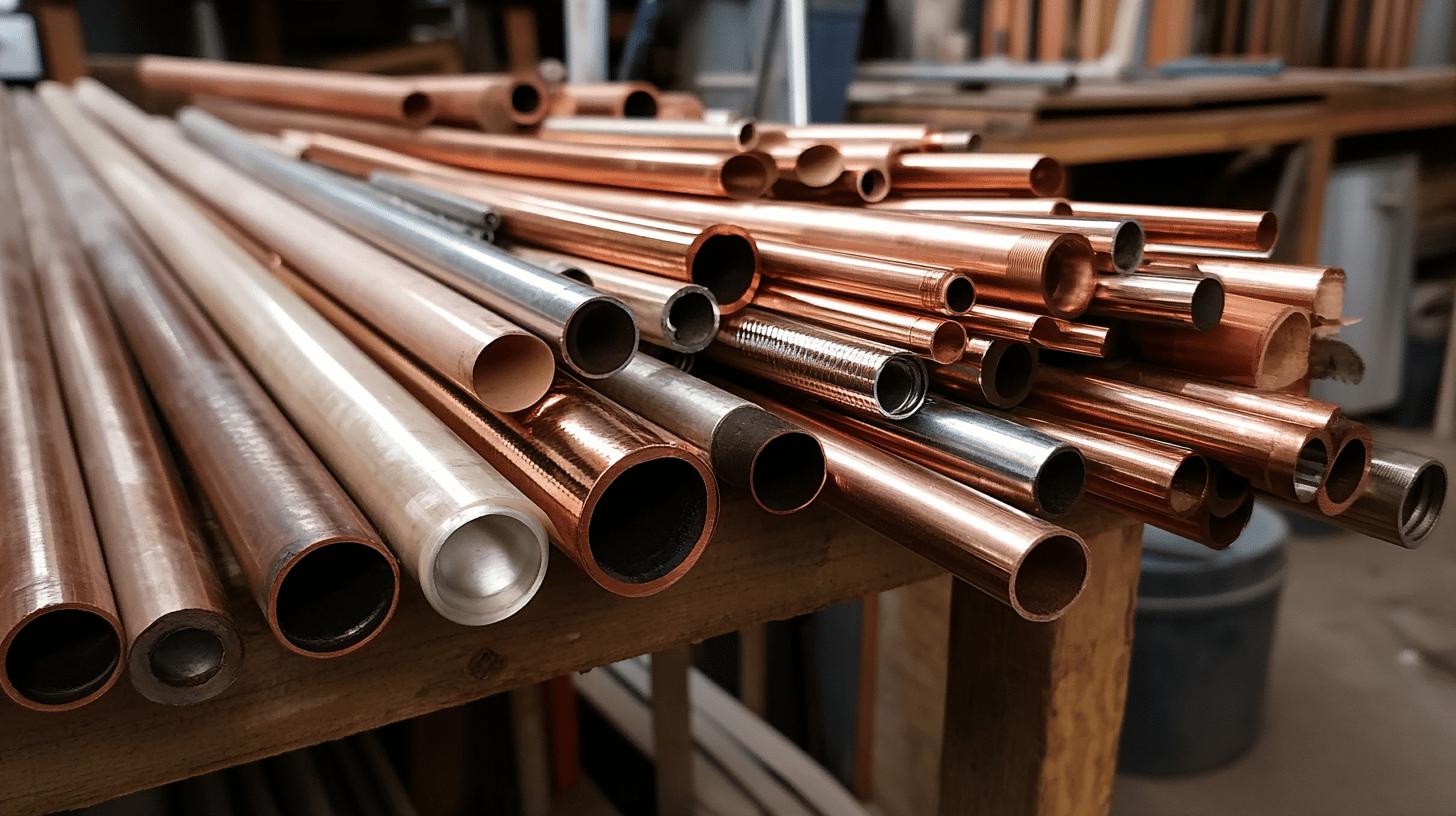TL;DR:
- Key Factors for Plumbing Systems: Durability, budget, compatibility with modern appliances, environmental sustainability, and compliance with local codes.
- Top Materials:
- Copper: Durable, bacteria-resistant; expensive, tough to install.
- PEX: Flexible, easy installation; UV-sensitive, not for outdoor use.
- PVC: Cost-effective, lightweight; may become brittle.
- PP: Eco-friendly, durable; less common in the U.S.
- Professional Plumbers: Ensure proper installation, code compliance, reduce issues.
- Benefits of Eco-friendly Solutions: Low-flow fixtures, rainwater harvesting, solar heaters, greywater recycling, smart water monitors; decrease utility costs and promote sustainability.
- Importance of Layout: Efficient planning reduces costs, improves flow, quality, and resale value.
Did you know that the plumbing choices you make now can impact your home’s efficiency for years? With more homes being built, picking the right plumbing system is more important than ever. Gone are the days of one-size-fits-all options—today’s systems use advanced and eco-friendly materials to fit different needs. In this article, we’ll cover the key things to consider so you can choose the best plumbing system for your new home, ensuring it lasts and meets modern demands.
Choosing the Best Plumbing Systems for New Homes
When picking plumbing systems for new homes, durability is key. With so many homes being built, choosing long-lasting materials like copper, PEX, and PVC ensures efficiency and low maintenance. These modern materials offer a practical shift from traditional metals, fitting today’s homes better.
Budget is also super important. While it’s tempting to cut costs, investing in a cost-effective system can save you money in the long run. Choosing systems that work with modern appliances lowers installation costs and brings better value by reducing utility bills. Balancing upfront costs with long-term savings is the best approach.
Key factors to consider when choosing a plumbing system include:
- Durability and lifespan of materials
- Budget considerations
- Compatibility with modern appliances
- Environmental sustainability
- Compliance with local plumbing codes
By focusing on these aspects, you can select a system that meets your home’s goals for functionality and sustainability.
Evaluating Plumbing Materials for New Homes

Choosing the right plumbing material for new homes is essential for both durability and efficiency. Copper is strong and dependable, though costly and harder to install. PEX is flexible and easy to work with but can’t be used outside due to UV damage. PVC is affordable and lightweight but can become brittle over time. PP is eco-friendly and durable but isn’t as widely used in the U.S.
Each material has its pros and cons, so understanding these will help you pick the best option to ensure your plumbing runs smoothly and requires less maintenance.
|Material|Advantages|Disadvantages|
|—|—|—|
|Copper|Durable, bacteria-resistant|Expensive, difficult to install|
|PEX|Flexible, easy to install|UV-sensitive, not for outdoor use|
|PVC|Cost-effective, lightweight|Can become brittle over time|
|PP|Durable, environmentally friendly|Less familiar in the U.S.|
The Role of Professional Plumbers in New Home Plumbing
Hiring professional plumbers is essential for plumbing installations in new homes. Their skills guarantee that systems are set up correctly and meet quality standards. They rely on detailed diagrams to design and implement plumbing systems that comply with local codes. This expertise is vital for building reliable and efficient plumbing, helping to prevent problems and costly repairs down the line.
Some benefits of professional plumbers include:
- Familiarity with modern systems
- Knowledge of building codes
- Use of advanced tools
- Assurance of long-term plumbing reliability
DIY plumbing can cause big problems and costs. If it’s not done right, you could end up with leaks and inefficiencies that need expensive repairs. While online tutorials can help, they can’t match the experience and skills of a professional plumber. Investing in quality plumbing services ensures everything meets regulations and lasts longer, saving you time, money, and a lot of hassle.
Best Plumbing for New Homes: Top Choices

Planning your plumbing layout is key to having an efficient system. A smart design reduces pipe length, which cuts costs and lowers the chances of leaks. By placing pipes and fixtures strategically, you can ensure good water flow and drainage, saving on water and energy bills. Addressing these factors upfront can help you avoid costly repairs down the line.
Professional plumbers can really help optimize your plumbing design. They use advanced techniques and detailed 3D diagrams, which are important for getting building permits and visualizing the whole system. These diagrams make sure pipes and fittings are placed correctly and fit well with your home’s structure. With professional help, you can achieve a plumbing system that performs well and meets safety standards.
Key Elements of a Plumbing Diagram
A good plumbing diagram includes several important components for system functionality:
- Drainage pipe routes
- Vent system paths
- Placement of fittings and fixtures
A smart plumbing layout has plenty of perks, like better reliability and easier maintenance. It can also increase your home’s resale value by ensuring everything is high-quality and durable. Investing in professional planning and design is a smart move for building a strong plumbing system that lasts.
Cost-Effective and Sustainable Plumbing Solutions
Eco-friendly plumbing options are becoming popular as homeowners look to lessen their environmental impact. These solutions save water and energy, showing a commitment to sustainability while also cutting costs. Features like water-efficient fixtures and smart water systems help conserve resources and boost your home’s efficiency.
Popular eco-friendly solutions include:
- Low-flow fixtures
- Rainwater harvesting systems
- Solar water heaters
- Greywater recycling
- Smart water monitors
Sustainable solutions can help lower utility bills by reducing water and energy use. Low-flow fixtures save water without sacrificing performance. Solar heaters tap into renewable energy, cutting down electricity costs. Rainwater and greywater systems offer alternative water sources, lessening the need for municipal supplies. Smart monitors track water usage to prevent waste. These practices not only promote sustainability but also make new home plumbing more economical.
Final Words
Choosing the right plumbing for new homes goes beyond just picking pipes. With modern advancements and more homes being built, it’s important to consider materials, professional installation, and efficient design. Every decision—from the type of material to the layout—affects durability, cost, and sustainability. Professional plumbers are essential for ensuring quality and compliance with local codes. By planning carefully and using innovative solutions, you can create a reliable and eco-friendly plumbing system that lasts, boosting both the value and functionality of your new home.
FAQ
Q: What is the cost of plumbing for a new house?
A: The cost of plumbing for a new house varies widely based on factors such as the size of the home, the complexity of the plumbing system, and the materials used. On average, costs range from $4,000 to $15,000.
Q: Why is PEX plumbing considered bad by some?
A: Some people consider PEX plumbing inferior due to concerns about its long-term durability and suitability for certain climates. However, PEX is generally valued for its flexibility, ease of installation, and cost-effectiveness.
Q: What is the best pipe for new construction?
A: The best pipe for new construction often depends on the specific needs of the project, but PEX and copper are commonly used for their durability and ease of installation.
Q: Do new homes use PEX or copper pipes?
A: New homes typically use both PEX and copper pipes. PEX is favored for its flexibility and cost; copper is selected for its durability and long lifespan.
Q: What type of plumbing lasts the longest?
A: Copper pipes are known for their durability and long lifespan, potentially lasting over 50 years. Other materials like galvanized steel can also be long-lasting, depending on the environment and water quality.
Q: What kind of pipe is mainly used in new residential construction?
A: In new residential construction, PEX is frequently used due to its flexibility and ease of installation. Copper is also common for its reliability and long-lasting properties.
Q: What is a new construction plumbing rough-in?
A: A new construction plumbing rough-in involves laying the basic plumbing framework for a building. This includes installing pipes that will be connected to future fixtures like sinks and showers.
Q: What should be included in a plumbing diagram for new construction?
A: A new construction plumbing diagram should include drainage pipe routes, venting system paths, and fitting and fixture placements. This helps in ensuring efficient and code-compliant installations.

